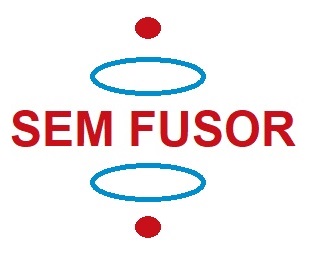
A new idea to obtain clean fusion energy

A
new idea to obtain clean fusion energy
|
Introduction In a "normal" fusor an electric field heats ions to conditions suitable for nuclear fusion. Because most of the ions fall into the wires of the inner grid (and electrons collide with the wall), these fusors suffer from high conduction losses and do unfortunately not produce net energy. Would it be possible to design a new kind of fusor without this inner grid, but that still confines the ions (and electrons) more or less in the center? Let's consider the following: Fig. 1. Design of SEM fusor. (Shem)
It consists of:
When do deuterium D+ ions fuse? If two D+ ions at the same but opposite speed collide head-on, their speed must be at least 6,4.106 m/s to come at such a short distance from one each other that the strong nuclear force becomes larger than the repulse Coulomb force. (See temp.speed calculations ) But because of i.a. tunnelling this speed is lower: In euro-fusion.org, in hyperphysics and other sources, a temperature of about 450.106 degrees C is mentioned for D-D fusion reaction to occur. This corresponds with a mean speed of about 2.106 m/s .
Confining D+ ions with speeds up to 3.106 m/s In a field of 1,5 tesla deuterium ions with a speed of 1,4 .107 m/s move in circles with a radius of 0,2 m (see radius D+ ions in a magn. field ). So with this magnetic field, it seems to be possible to avoid that the particles escape sidewards. A positively charged sphere at 151 V and with a radius of 8 cm will stop a D+ particle with a speed of 3.106 m/s and an initial distance of 30 cm from the center of the sphere. See calculation. So it seems to be possible to confine the fast D+ ions in the vertical directions with a static electric field. The electrons, by the way, are a lot easier to confine, because of their smaller mass.
Computer simulation I made my own simulation program to simulate the SEM fusor design: D+ ions and electrons are generated/injected under in the vacuum chamber (see fig. 1) with various vertical speeds in the experiments (of about 1.104 till 3.105 m/s) They interact with the static electromagnetic field and with each other according to Coulomb's and Biot-Savart law (non-relativistic). Leapfrog integration is used
Fig. 2. Screenshot of a simulation experiment. Depending on the voltages, configuration, etc., the D+ ions reach speeds > 2.106 m/s. This is more than the speed needed for fusion. And when deuterium ions meet at opposite velocities, their relative speeds will be even double. Doubts:
Real experiments should be performed to investigate this... with a few millions of euro’s or dollars, we could buy a building for a laboratory, a (second handed) superconducting magnet, a vacuum chamber, all kind of equipment. This could be done with crowdfunding. ( donate ). Or somebody, a company or university want to carry out an experiment?
Join
our Facebook group, perhaps you have ideas and you can help :
And if it doesn't produce fusion? Let´s give it a try, don´t you think so? To get clean abundant cheap energy is just what the world needs right now... |
|